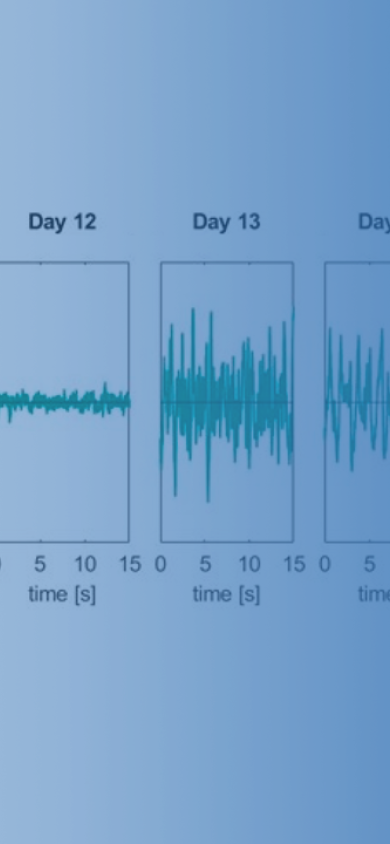We combine our many years of experience in the field of experimental sleep research and chronic EEG recordings in animal models with modern methods in order to define and promote fundamental dependencies and physiological interactions, but also possible synergies, especially at the interfaces of wakefulness <-> sleep, and consciousness <-> loss of consciousness in the context of anesthesia, which are still insufficiently understood.

The two major research areas are each divided into a whole series of sub-projects with the possibility of different doctoral, master's and bachelor's theses. For further information on the sub-projects and vacancies, including internships, please contact: thomas.fenzl@tum.de or 089 4140 9043.
Top down versus Bottom up:
The systemic processes during the induction and withdrawal of anesthesia are still not fully understood. Is the loss of consciousness initiated cortically and transmitted subcortically (top down) or is it triggered subcortically and the altered cortical activities follow secondarily (bottom up)? Closely related to this question is our search for the influence of subcortically/cortically localized neuronal networks of active sleep/wake control on the loss and recovery of consciousness during anesthesia.
Postoperative Delirium:
Postoperative delirium (POD) or postoperative cognitive impairment (POCD) after surgery with general anesthesia are not uncommon. Clearly defined triggers have not yet been selectively defined. Our research focuses on individual sleep behavior and its impairment due to anxiety and/or stress prior to anesthesia. In addition to these external factors, we are also increasingly investigating physiological influences that presumably lead to cognitive impairments via the brain's glymphatic system. A further sub-area within this complex of topics is the interplay between manifesting Alzheimer's disease and general anesthesia, which often appears to manifest itself in a chronic decline in cognitive performance.
- In vivo electrophysiology (chronic): EEG, EMG, LFP, Tetrodes und Multitrodes, electrical stimulation und lesioning
- Chemogenetics: DREADDs, AAVs
- Behavioral Experiments: Water Cross Maze, Open Field, Fear Conditioning
- Experimental Anesthesia: Sevoflurane, Propofol, Dexmedetomidine, Ketamine
- Immunohistochemistry
- Thomas Fenzl (Principal Investigator / Neurobiologist and Zoologist)
- Alp Altunkaya (PhD student)
- Monika Vadkertiova (PhD student)
- Jianfeng Jiao (PhD student)
- Tom Happe (PhD student, experiments completed)
- Philipp Tamas (PhD student, experiments completed)
- David Killing (PhD student, experiments completed)
- Catharina Hedenig (research fellow)
- Maria Koenes (Bachelor‘s student)
- Simone Kirmayr (Bachelor‘s student)
- Isabell Singhof (Bachelor‘s student)
Technical Assistance:
Andreas Blaschke
Dr. vet. Nina Bayer
Animal Management:
Dr. Stefanie Monecke
- Prof. Gerhard Rammes
- PD Dr. Matthias Kreuzer
- Univ.-Prof. Gerhard Schneider
- Dr. Anna Magdalena Biller
- Michela Guglielmotto, Neuroscience Institute Cavalieri-Ottolenghi, Turin, Italy
- Walter Dastru, University of Turin, Italy
- Daniela Delli Castelli, University of Turin, Italy
- Meinrad Drexel, Medical University Innsbruck, Austria
- Sadegh Rahimi, Medical University Innsbruck, Austria
- Christian Alzheimer, Friedrich-Alexander University Erlangen, Germany
- Chadi Touma, University of Osnabrück
- Mathias Schmidt, MPI for Psychiatry, Munich
- Graduate School of Neuroscience (GSN), Ludwig Maximilian University of Munich
- Biomedical School of Neuroscience, Technical University Munich
- School of Medicine and Health, TUM University Hospital, Munich
Altunkaya, A., Deichsel, C., Kreuzer, M., Nguyen, D.-M., Wintergerst, A.-M., Rammes, G., Schneider, G. & Fenzl, T. (2024) Altered sleep behavior strengthens face validity in the ArcAβ mouse model for Alzheimer’s disease. Scientific Reports, 14, 951.
Obert, D.P., Killing, D., Happe, T., Tamas, P., Altunkaya, A., Dragovic, S.Z., Kreuzer, M., Schneider, G. & Fenzl, T. (2024) Substance specific EEG patterns in mice undergoing slow anesthesia induction. BMC Anesthesiol, 24, 167.
Kollmansperger, S., Anders, M., Werner, J., Saller, A.M., Weiss, L., Süß, S.C., Reiser, J., Schneider, G., Schusser, B., Baumgartner, C. & Fenzl, T. (2023) Nociception in Chicken Embryos, Part II: Embryonal Development of Electroencephalic Neuronal Activity In Ovo as a Prerequisite for Nociception. Animals, 13, 2839.
Rahimi, S., Joyce, L., Fenzl, T. & Drexel, M. (2023) Crosstalk between the subiculum and sleep–wake regulation: A review. Journal of Sleep Research, e14134.
Fritz, E.M., Kreuzer, M., Altunkaya, A., Singewald, N. & Fenzl, T. (2021) Altered sleep behavior in a genetic mouse model of impaired fear extinction. Scientific Reports, 11, 8978.
Obert, D.P., Killing, D., Happe, T., Altunkaya, A., Schneider, G., Kreuzer, M. & Fenzl, T. (2021) Combined implanted central venous access and cortical recording electrode array in freely behaving mice. MethodsX, 101466.
Härtner, L., Keil, T.W.M., Kreuzer, M., Fritz, E.M., Wenning, G.K., Stefanova, N. & Fenzl, T. (2017) Distinct Parameters in the EEG of the PLP α-SYN Mouse Model for Multiple System Atrophy Reinforce Face Validity. Front Behav Neurosci, 10.
Kreuzer, M., Polta, S., Gapp, J., Schuler, C., Kochs, E.F. & Fenzl, T. (2015) Sleep scoring made easy—Semi-automated sleep analysis software and manual rescoring tools for basic sleep research in mice. MethodsX, 2, 232-240.
Fenzl, T., Touma, C., Romanowski, C.P.N., Ruschel, J., Holsboer, F., Landgraf, R., Kimura, M. & Yassouridis, A. (2011) Sleep disturbances in highly stress reactive mice: Modeling endophenotypes of major depression. BMC Neuroscience, 12, 29.
Fenzl, T., Romanowski, C.P., Flachskamm, C., Honsberg, K., Boll, E., Hoehne, A. & Kimura, M. (2007) Fully automated sleep deprivation in mice as a tool in sleep research. J Neurosci Methods, 166, 229-235.
